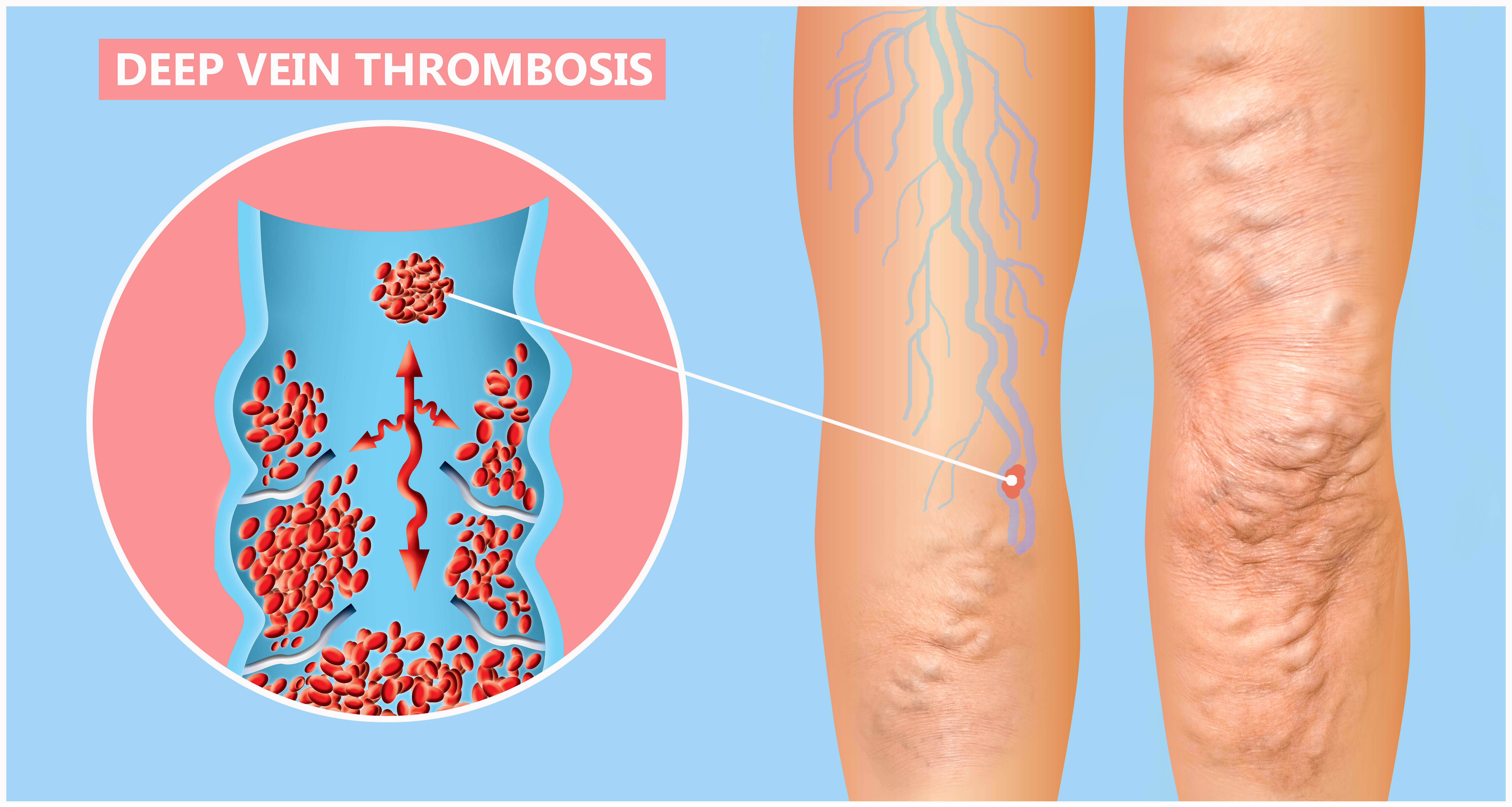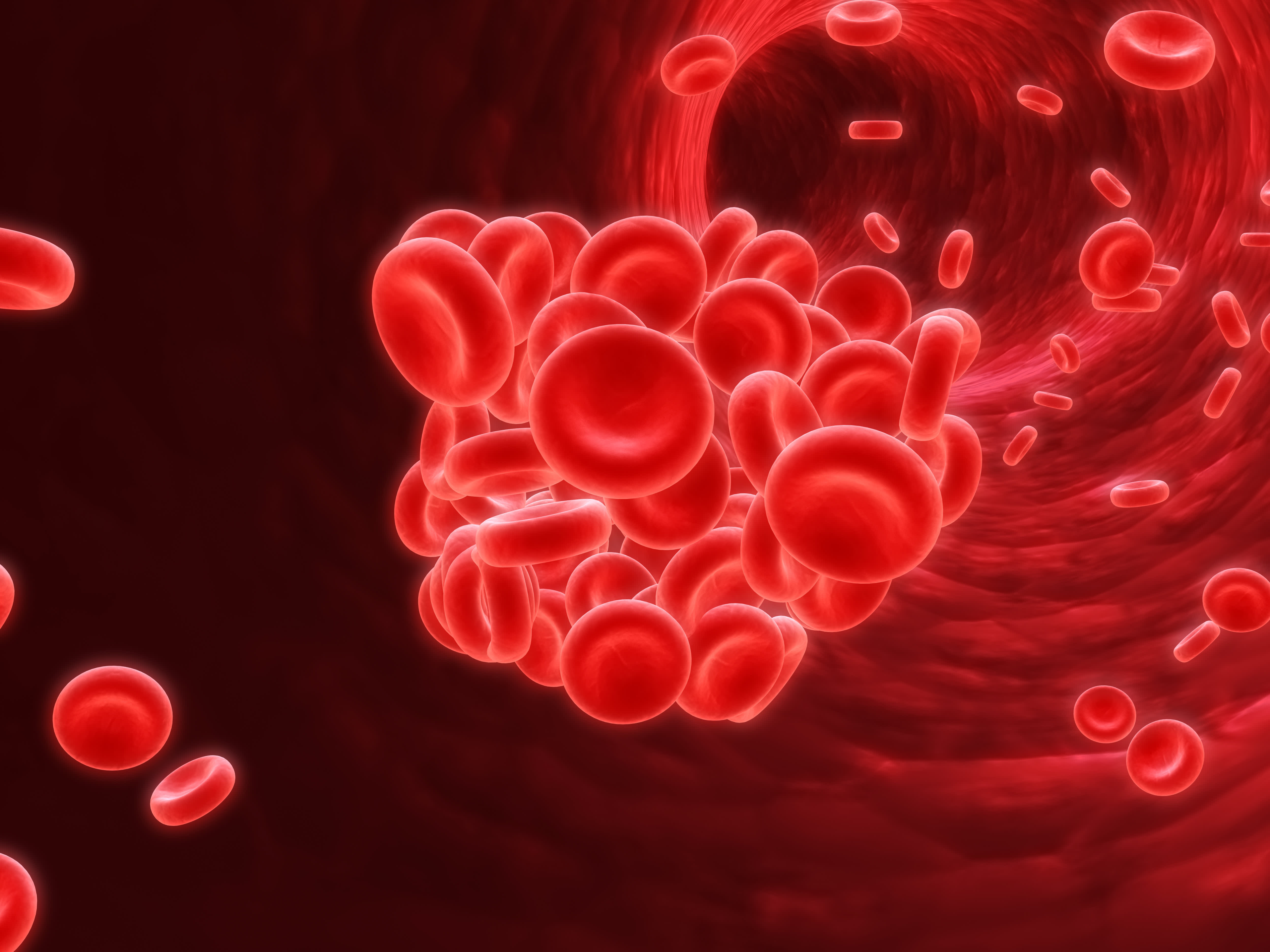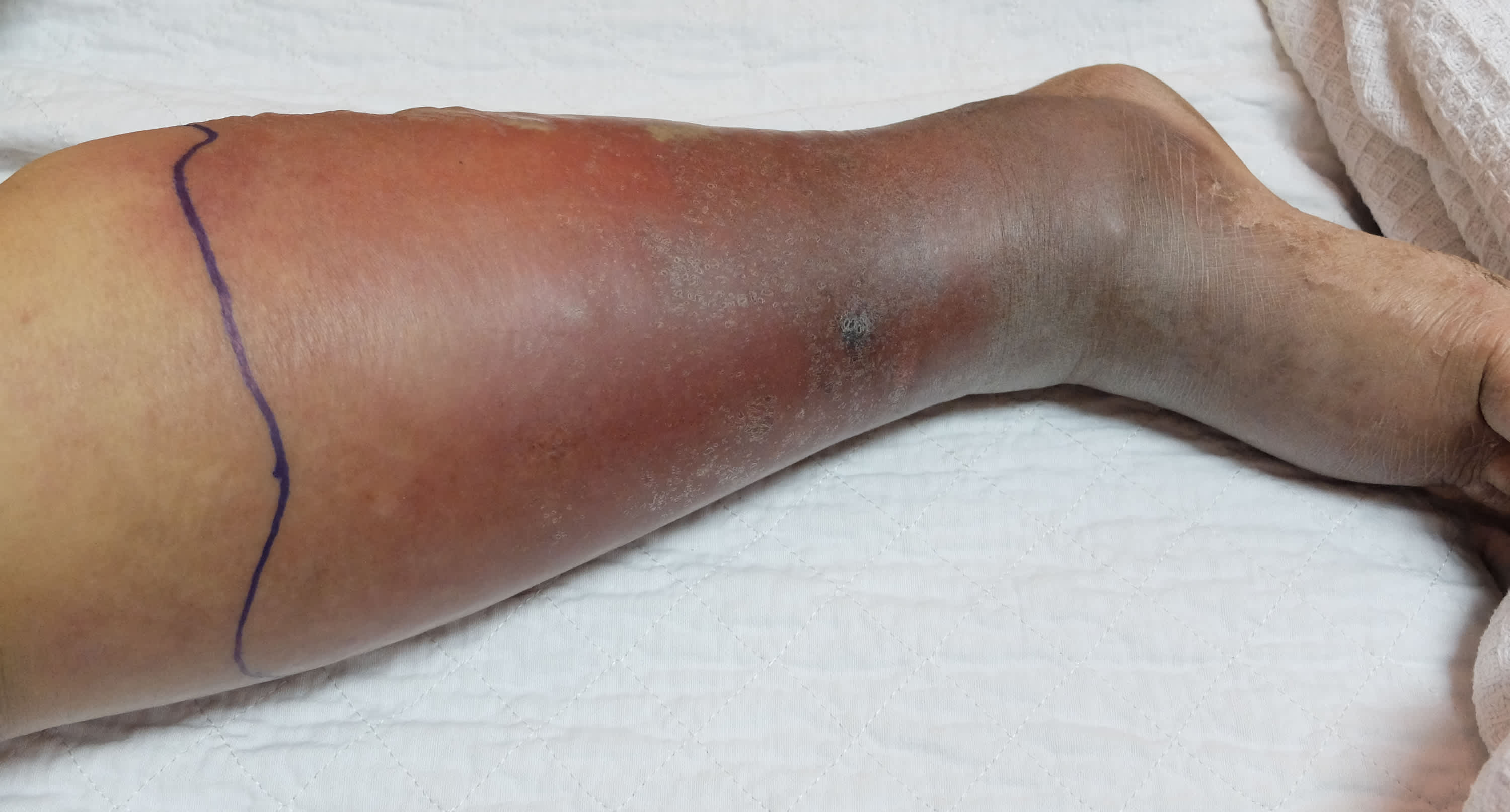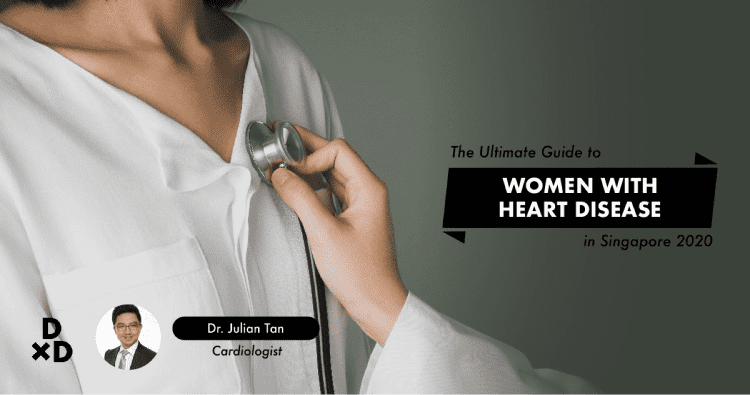If you suddenly feel pain on your leg when walking, or if you notice a reddish-bruise-like spot on your calf, then you should be careful because that could be the symptoms of Deep Vein Thrombosis!
Deep Vein Thrombosis can strike anybody, sometimes without noticeable symptoms. My experience as a surgeon has allowed me to share some information regarding deep vein thrombosis in Singapore
In this article, I’ll be discussing deep vein thrombosis, including:
- Symptoms,
- Risk factors,
- Treatments of Deep Vein Thrombosis,
- Cost, etc.
I have an article on seeing a Vascular Surgeon here on Human too.
What is Deep Vein Thrombosis (DVT)?
DVT is what happens when the blood clots in a vein. It usually strikes one of the legs, around the thigh or calf. [1] However, deep vein thrombosis can also occur in the arm. If not treated properly or quickly, it can cause serious illness, disability, and may lead to death.
Deep vein thrombosis generally occurs to 1-2 per 1000 individuals per year with a slightly higher rate in women than in men. Women have a higher chance of getting DVT before 60, while men have a higher chance of getting DVT after 60. [2]
What are the causes of Deep Vein Thrombosis?
Deep vein thrombosis can be caused by anything that interrupts the blood from circulating naturally. The clot can occur due to injuries or when you don’t move for a long time, like after surgery. [3]
Read more about your cardiovascular risk in Singapore.
What are the symptoms of Deep Vein Thrombosis?

The typical symptoms of deep vein thrombosis are: [4]
- Leg pain, usually along one leg around the thigh or calf
- Swelling, usually along only one leg, ankle, and foot
- Swollen veins that hurt when being touched
- Warm and reddish skin
Are there risk factors linked to Deep Vein Thrombosis in Singapore?
Even though it is not as common in Singapore as in other countries, the number of individuals who are developing deep vein thrombosis is increasing [5] - especially if you are smoking and taking birth control pills.
Deep vein thrombosis can attack people who are overweight, immobile (from sitting for too long), pregnant, have varicose veins, and the elderly, among others.
Deep vein thrombosis can occur in children as well even though the chances are lower than in adults.
Also Read: When should I be concerned about blood clots during my period?
How is Deep Vein Thrombosis diagnosed in Singapore?
Since not everyone will experience the same symptoms, it can only be diagnosed after doing a thorough health screening because it can also occur with no symptoms for some people.
Deep vein thrombosis can be diagnosed by: [6]
1. Duplex Ultrasonography
Duplex ultrasonography is the standard method that is usually used to detect deep vein thrombosis. It uses soundwaves to look at the blood flow in the veins.
2. Blood test
This test uses a D-dimer blood test to measure the blood substance that is released when a clot breaks up. If the blood test comes out positive, it means the patient has a blood clot.
3. Contrast Venography
Contrast venography uses an x-ray to check the deep veins by injecting a dye into the large vein in your foot or ankle. Even though this is the most effective way to diagnose DVT, this procedure is slightly invasive because it involves an injection. Therefore, this procedure is only used on certain patients.
4. Magnetic Resonance Imaging (MRI)
This technique uses radio waves and magnetic fields as well as a CT scan to show an image of the body. Using this technique, doctors will be able to see the veins and clots. However, this technique is rarely used to diagnose DVT.
How is Deep Vein Thrombosis treated?

There are several kinds of surgeries that can be done to treat DVT:
1. Thrombolysis
Thrombolysis is a procedure to break up the blood clot that blocks the blood flow in veins and arteries. There are 2 types of thrombolysis:
- Chemical
- Mechanical
Depending on your medical history, you will be given two choices of anaesthesia: general anaesthesia and IV sedation.
During this surgery, your surgeon will inject a clot-dissolving drug through the catheter into the clot. Even though this procedure can dissolve a large amount of clot, it has a greater risk of bleeding complications.
If this procedure is not done properly, you are at risk of:
- Bleeding
- Infection
- Allergic reactions to the x-ray dye and other materials [7].
2. Venous Thrombectomy
Venous thrombectomy is a surgical procedure that removes blood clots from your vein. This procedure is usually used to treat a rare complication of deep vein thrombosis called Phlegmasia Cerulea Dolens.
However, you are at risk of complications if you:
- Are older than 65 years old,
- Bleed easily
- Have hypertension
- Have heart problems
- Have poor kidney function
There is a minimally invasive procedure called percutaneous mechanical thrombectomy. Before doing the procedure, you will be given a blood-thinning medicine called heparin that helps reduce the clot. Then, your doctor will insert a catheter into your vein through a small incision below the knee. [8]
Your doctor will also inject you with a contrast dye through the sheath before performing the venous thrombectomy. The dye allows the doctor to see the area that is supposed to be treated through the x-ray screen. [9]
If you undergo the surgical procedure, your doctor will make a slightly larger incision on the treated area and remove the clot using a catheter.
3. Inferior Vena Cava (IVC) Filter Placement
The procedure is done by putting a filter inside the large vein (vena cava). What the filter does is to catch the blood before it goes to the lung. By doing an IVC filter, it helps to prevent pulmonary embolism, which is the sudden blockage of a major artery.
However, this procedure does not treat DVT. This procedure only prevents the blood from travelling to the lung and becoming a pulmonary embolism [10].
Are there any non-surgical alternatives to treat Deep Vein Thrombosis?
If you want to treat the deep vein thrombosis naturally, you can try doing exercises if the clot is not too large, such as:
- Running
- Cycling
- High-intensity interval training
You can also include stretching, squats, and lunges to strengthen your knees and legs. That way, the blood that flows through the vein won’t get clumpy and clot the vein.
What treatment options can I get to recover from Deep Vein Thrombosis?

There is a medication that you can take to ease the symptoms and prevent the blood clot from getting bigger and moving. The medicine is an anticoagulant, which works as a blood thinner. However, anticoagulants do not destroy the clot, your body dissolves the clot naturally.
The anticoagulants are only given as a prescription. You have to consult your doctor about the best type of medication to manage your DVT.
You can also use compression stockings to help with the swelling. Most compression stockings are worn below the knee and become looser as it goes up. This creates pressure that helps reduce swelling. [11]
Read more about what happens and the treatment if you are diagnosed with Chronic Venous Insufficiency (CVI).
What are the warning signs of Deep Vein Thrombosis?
Surgery needs to be performed if there is a complication. There are two complications that usually occur:
1. Pulmonary Embolism
Pulmonary embolism occurs when the blood clot travels to the lungs, causing you to feel sudden shortness of breath, dizziness, rapid pulse, and chest pain, especially if you start coughing blood. [12]
2. Postphlebitic Syndrome
The postphlebitic syndrome occurs when the blood clot reduces the blood flow in the affected areas, leading to swelling, your skin feeling sore and discoloured, and leg pain. Additionally, if this is not treated quickly, the complications can cause death. [13]
What happens if Deep vein thrombosis is left untreated?
If it’s not treated, Pulmonary Embolism and Postphlebitic Syndrome can occur, and therefore those complications can lead to death. There are cases involving deaths.
This usually happens when the elderly or pregnant women get DVT and suffer its complications because they are more vulnerable. [14]
What should I do if I have Deep Vein Thrombosis?
If you think you have DVT, you need to see your doctor as soon as you experience:
- Swelling,
- Redness in your arm or leg area,
- And pain.
You also need to go to the hospital if you experience chest pain, shortness of breath, coughing blood, sweating, and fainting because your blood clot may have travelled to your lungs. [15]
Conclusion

Even though Deep Vein Thrombosis (DVT) can be deadly, this condition is manageable. DVT is less likely to occur if you exercise regularly or move your arms or legs frequently.
If you are experiencing the symptoms of DVT, make sure that you let your doctor know so it can be treated quickly before it is too late.
Remember to take care of your body so that your body can take care of you too.
Dr Cheng Shin Chuen is a board-certified general surgeon sub-specializing in Vascular and Endovascular surgical procedures. He is also a vascular surgeon and is clinically interested in treatment for diabetic patients, in particular the prevention of amputation or major amputation.
Read more on Dr Cheng Shin Chuen's QnA here.











